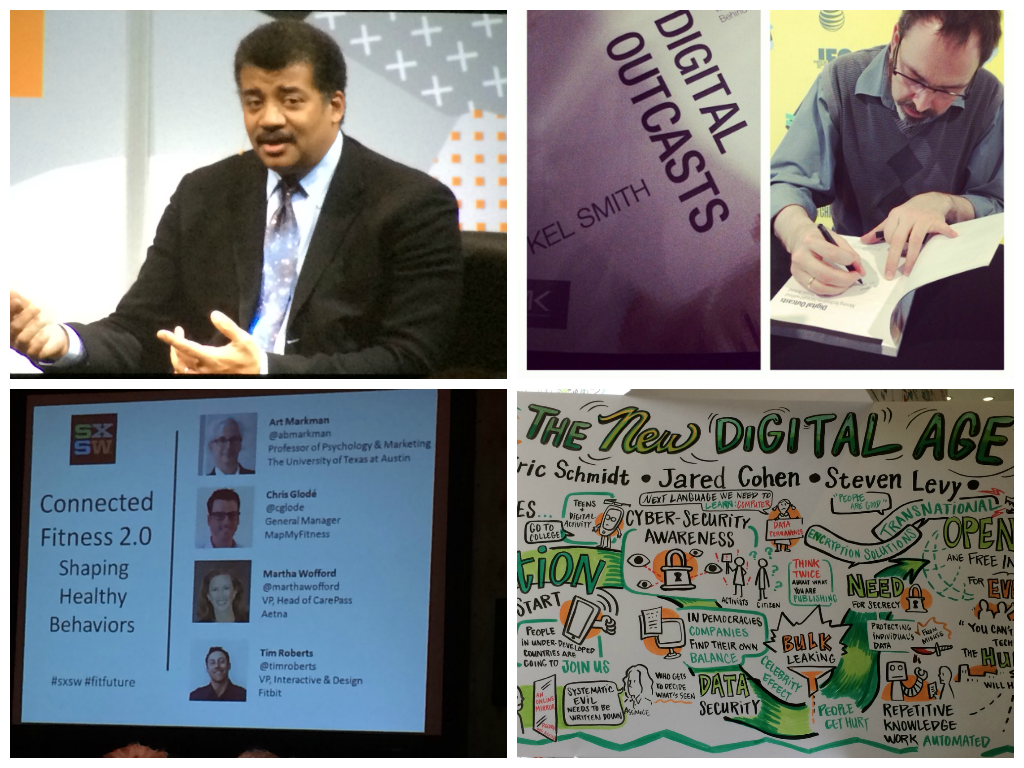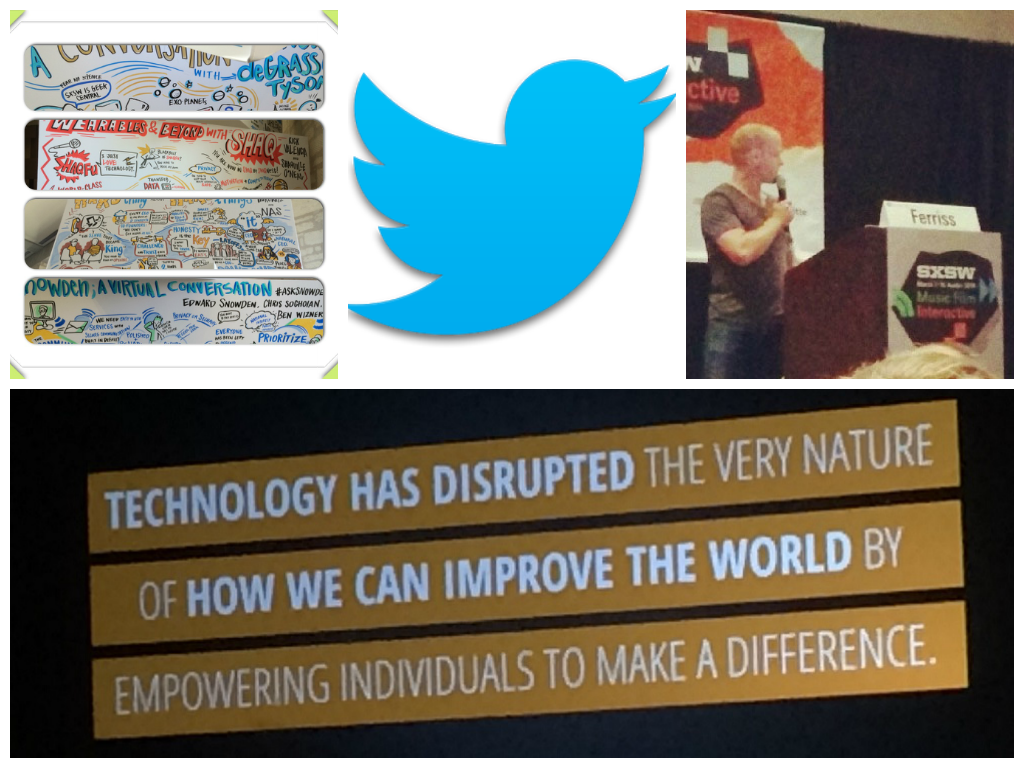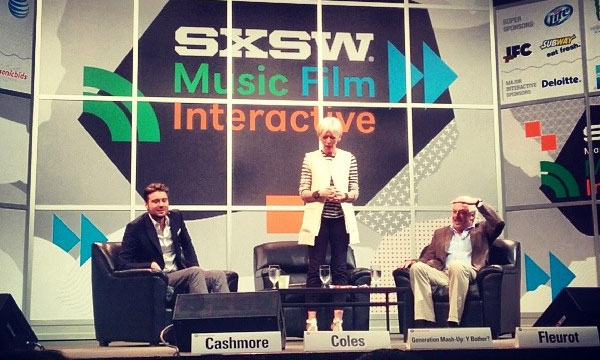The first annual conference on a technology that has transformed access and connections for users globally was held on May 20, 2014 and hosted by Nihal Mehta (@nihalmehta) at Eniac Ventures and Gary Moon at Headwaters MB. The concept of mobile-specific conferences are still somewhat new and M1 (“Mobile-First”) Summit took on the challenge of bringing together a variety of disciplines/categories to focus-in on the critical importance of smartphones. The Google report from May 2013 indicated smartphone penetration has risen to 56% of the US population and transformed consumer behavior and this number is only growing.
The conference was broken out into Q&A and panels; standard fare for conference circuits. The Q&A was classified as “Fireside Chats,” a traditional style of informal conversations between editors, writers and bloggers, as well as, leading CEOs, Partners, and SVPs of traditional and nontraditional companies that have experienced and adjusted their business because of the mobile revolution. As is customary, the panels covered a specific topic that coordinated with the expertise of the individuals.
The conference attendance in the morning was quite low, but by 11:30 AM the foyer of the Grand Hyatt in midtown was buzzing with attendees networking and sipping on fruit-infused water and coffee.
I sat in for the Fireside Chat with Esther Lee, SVP of Brand & Marketing, AT&T and Abbey Klaassen, editor at Advertising Age. AT&T has had to concentrate on the challenge of changing brand perception in parallel with incorporating mobile technology into the brand strategy. There is “not a single industry that isn’t being redefined by mobile technology,” said Ms. Lee. It is critical to understand that users will dictate how they want to interact with brands and this may be on a smartphone or their laptop computer. The context and need of the user “should drive what the screens and platforms should be.”
An ongoing theme that echoed throughout the conference, was that there are still significant gaps in the industry. “The Next Frontier of Mobile Advertising: Cross-Platform,” panel with Verizon, Tapad , Dstillery , Drawbridge and Foursquare kicked-off that there are issues specific to the connection of platforms, apps and devices to provide for optimal output of insights. Users expect seamlessness paired with context, and there is still significant progress needed. Omar Hamoui (@omarh), keynote speaker, illuminated the audience with the staggering stat that the number of connected devices has surpassed the Earth’s population. The world population is over 7 billion people ; the number of devices is estimated between 8-10 billion as of 2012 . The world has achieved a connected state and now the pressure has extended to making that experience significant. The adoption rate has grown so rapidly while the creation and development of assets to support the use and connection are still in their infancy.
Wearables are a great example of this. Fitness and health manufacturing provided for the first wave of wearable technology and now there is a new vision for this opportunity. Tracking your vitals and receiving relevant content the moment you want it or need it have exploded in growth. Only now this piece of technology can also easily match your outfit; i.e “on Wednesdays we wear the Cuff bracelet.” The companies that participated in the “Wearable Tech: The Next Fashion Frontier” were Ringblinz (http://ringblingz.com/), MEMI (http://www.hellomemi.com/), Trellie (http://trellie.com/), Cuff (https://cuff.io/) and Brand Foundry Ventures (capital investment firm). I had a chance to approach the panelists at the end for a sneak peek at the “jewelry” and thought all of the pieces would be something I would wear happily. Well-crafted and light-weight, they felt just like any other fashion jewelry you would buy in Soho, NYC.
The features of this next generational wearables caters to functions outside of the health and fitness angle. These necklaces, rings and cuffs now offer women a quick security system or a quick notification of social interactions on your mobile for teens and adults (so as to eliminate constant checking and missing), and as pointed out by one of the panelists, “women still hold the buying power,” so catering to this gender in the wearables market does make a lot of sense. All panelists also agreed that in the next couple of years the term “wearables” will no longer be applicable. They will be so ingrained in our daily culture that this term will no longer be relevant. I, for one, was happy to hear that.
So, what are some of the drawbacks and weaknesses of this current category? These are small companies, not a Nike or Jawbone with an established market and support. The biggest complication is tied to the hardware. This process is expensive and difficult to manage. Thankfully, the digital elements are now the simple element. We have progressed that far. We didn’t have a chance to ask questions but I was intrigued to know if possibly 3-D printing could be the great equalizer for these sorts of companies. Also, the location of selling is a big element. There isn’t a natural space to sell but the consensus was department stores would be most likely.
Yet, an individual isn’t going to want to have to wear multiple devices to track all of the important elements in their lives, right? Maybe, maybe not. The push to acclimate users and provide a benefit long enough to support habit formation might just be the key. Users are not ultimately going to be able to handle too many tasks to see performance results or even to feel secure. Solving for that will lead to outright winners in the field.
Continuing onward with the idea of developing with women as the target audience segued nicely with a quick panel on “Girls Who Code….on Mobile.” Reshma Saujani, founder and CEO of Girls Who Code (http://girlswhocode.com/) and Jocelyn Leavitt , Founder and CEO of Hopscotch , led a truly inspiring discussion on why it is so critically important to engage with young girls and women on the importance of embracing computer science and programming. It isn’t really a new story that females in the US are behind males in the field of computer science. The Atlantic and US News and World Report both published articles on the gender gap between males and females taking the computer science AP exam in high schools throughout the US. While females lead the charge in terms of overall AP tests (almost 2.1 million girls in the US took AP tests in 2013, versus 1.75 million boys), “boys outnumber girls by more than 4 to 1 among computer science test-takers.” As suggested in the article by the Atlantic is the need to “start Earlier.” This sentiment was echoed by the panel as well as the theory that girls need to be shown that it is okay to fail; “failing before succeeding” is integral part of programming. This mantra could be extended to many aspects of life; understanding iterative gains versus expectation of initial success should be permeating through education. Girls need to feel encouraged “to fail, to learn, to disrupt.” I couldn’t agree more.
The final presentations captured the ongoing spirit of the conference: we can do better. The “Pushing Mobile Advertising to be More Effective” criticized the underwhelming vision of ad campaigns in the mobile space. Acting more as an annoying pest (when the ads actually display properly) than as a helpful guide to valuable content, there is a definite need for better methods of promotion. Matt Wallaert , a behavior scientist at Bing, (with no hang-ups about the term for search being branded “Google”), delivered a motivating presentation on the responsibility of providing a better experience for the user; “mobile is about action – less should be required of the user.” Users are engaging with their mobile phones with the expectation of completing a task and “search has fundamentally changed.” The fact that there are so many applications to interact with is more of a burden, a “paradox of choice” as termed by Barry Schwartz (http://www.ted.com/talks/barry_schwartz_on_the_paradox_of_choice), than as a refreshing plethora of options.
At the end of the day, only some of the applications, devices and technology will be successful. Even in the world of Online Dating, people have so many options to choose from as we heard from both Tinder (www.tinder.com) and Hinge (http://hinge.co/). The appeal and success will be if the user deems the content to be valuable enough to integrate as part of their daily life. Jason Jacobs , founder and CEO of Runkeeper highlighted the constraints of an application as being the user themselves. The app “only works if the user is interested in running, which is a growth barrier.”
Looking forward to M1 Summit 2015 and to see what unfolds over this coming year!






